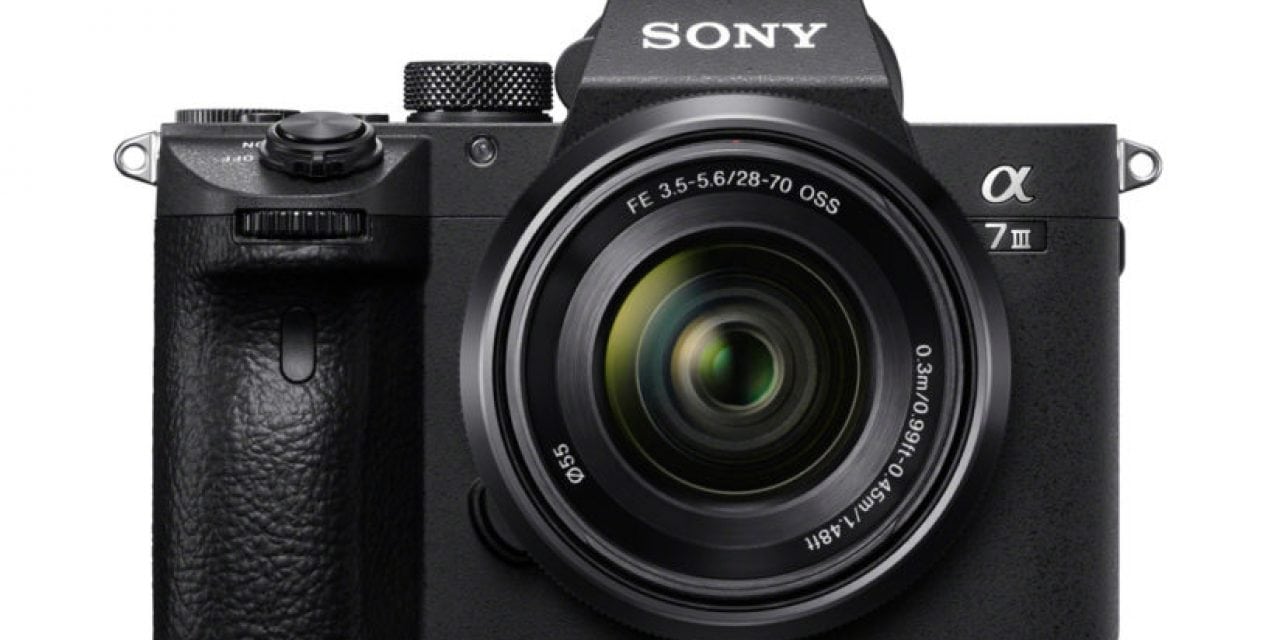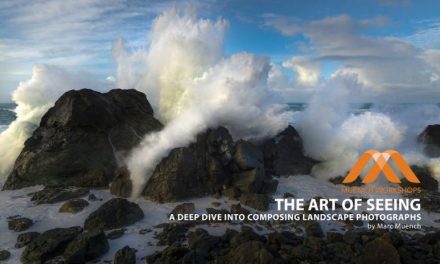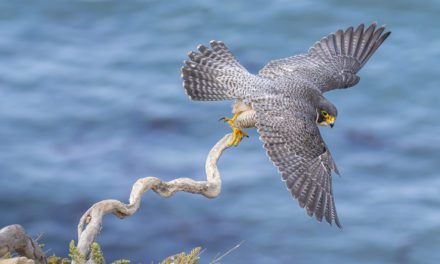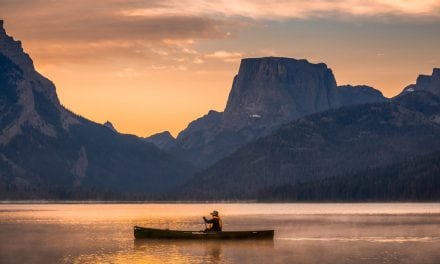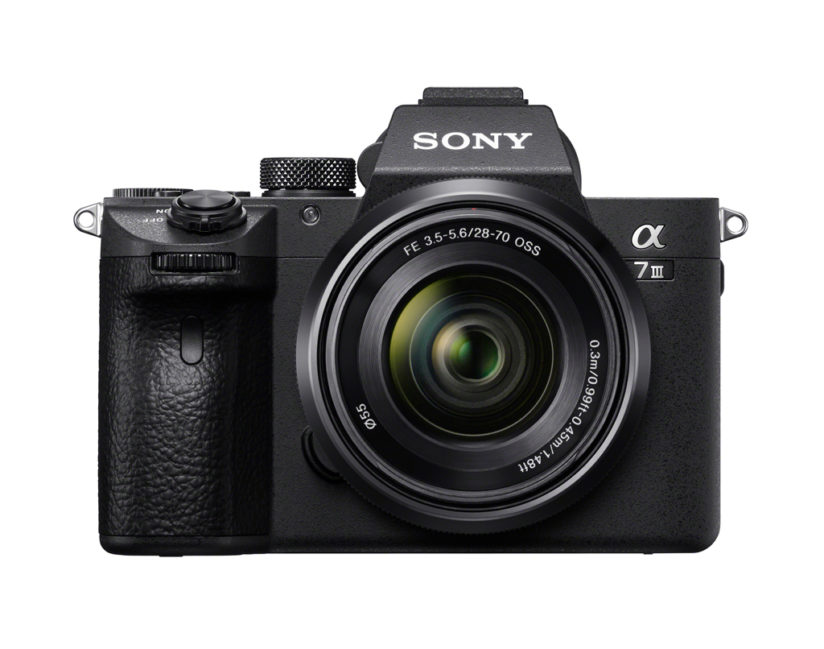
Sony’s a7 III is the latest full-frame mirrorless camera from a company that’s been particularly prolific since it defined the category with the Sony a7 just a few short years ago. With a price tag of $2,000, a relatively small form factor and a laundry list of high-end specs, the a7 III is a compelling camera, even for those DSLR shooters who have been reticent to go mirrorless.
With a 24.2-megapixel sensor, a capture rate of 10 fps, an ISO range of 100-51200 and 14 bits of dynamic range, the a7 III compares well with any camera currently offered, regardless of price tag or whether or not it has a mirror. The most expensive DSLRs (the Nikon D5 and Canon EOS-1D X Mark II) just slightly best the a7 III in speed, while Sony’s own a9 sets the capture rate record.
Cameras like the Nikon D850, Canon EOS 5DS R and Sony a7R III boast a higher-resolution sensor, though these cameras tend to find a more specialized audience. The Sony a7 III sits nicely in a category that covers the majority of landscape and nature photographers.
There are some specs of the a7 III that help it stand out from the DSLRs it competes against, most notably the Canon EOS 6D Mark II and the APS-C Nikon D750. Thanks to the mirrorless nature of the a7 III, the camera can operate with a completely silent electronic shutter at 10 fps, and the mechanical shutter operates at the same speed.
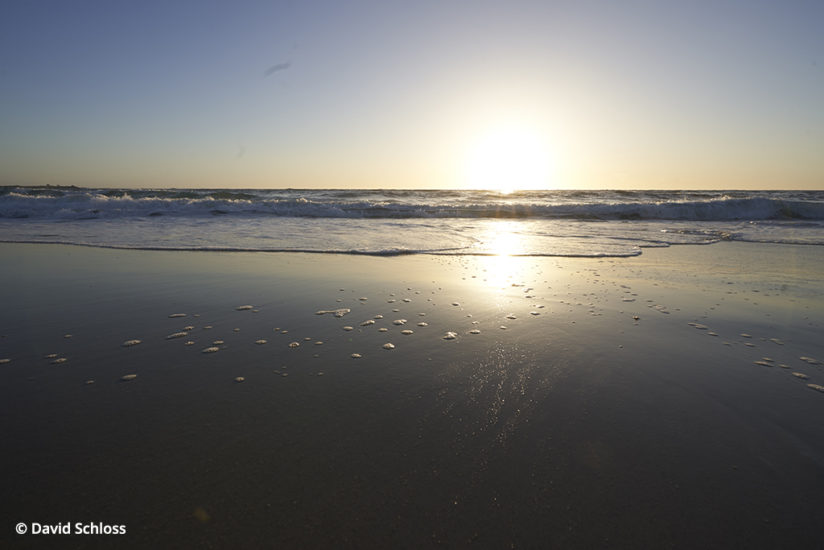
The a7 III has a 693-point phase-detection AF system coupled with a 425-point contrast detection AF system and can capture 177 JPEG or 89 compressed RAW files before the buffer fills. Video users will get some of the best 4K specs available short of a dedicated cinema camera. The a7 III captures full-frame, non-pixel-binned 4K footage from a 6K oversample and can record at 100 Mbps. Sony has included S-Log3 and HLG support for high dynamic range workflows.
Despite the great stats, the a7 III isn’t without compromise. To hit the $2,000 price tag, Sony made some design decisions to keep the body affordable yet not detract from image quality. Largely, these compromises come down to the quality of the electronic viewfinder as well as some video features, which means that many users might not even notice them.
Design Change
Sony’s a9 featured many highly requested design improvements, most notably a better battery (now able to last a whole shoot), a new AF control stick, dual SD slots and revamped AF system that’s even better at tracking faces and the eyes of subjects.
The Sony a9 introduced an enhanced EVF, which the a7R III also utilizes but the a7 III does not, retaining instead the EVF from the a7 II. This is not a bad EVF, though it’s not as bright as the one in the a9 and a7R III, and has slightly though perceivably lower resolution. That said, I’ve been using the older a7R II and a7 II models to shoot everything from airshows to weddings and haven’t found the EVF lacking—it’s just not as nice as the one in the a9 and a7R III.
Another way to say this: if you use a Sony a9 or a Sony a7R III, you’ll be getting a superb EVF, while the a7 III uses merely an excellent EVF. Video shooters will likely have more issues with the EVF, as it’s not as easy to determine critical focus on this EVF without zooming into a subject, which is not necessary on the newer EVF on the a9.
Another compromise, at least over the a9, is in the performance of the electronic shutter. Cameras in electronic shutter (i.e. silent shooting) mode are prone to an effect called rolling shutter, caused by the way the camera reads information from the sensor. Data is read off the sensor line-by-line from one end of the imaging chip to the other, and when shooting fast-moving subjects, distortion can occur as the subject moves enough that it has shifted position from the start of the exposure to the end. The result is an image that looks warped, with a bottom and top (or two sides) that don’t quite line up.
The Sony a9’s higher cost reflects the additional engineering in the sensor-reading process during electronic shutter, and the camera reads data fast enough that rolling shutter is nearly eliminated, even at the 20 fps maximum rate. The Sony a7 III doesn’t read data as quickly, and so rolling shutter is a possibility.
Luckily, the camera operates as fast with its mechanical shutter as it does with electronic shutter, so electronic shutter can be employed only when silence is needed. Photograph a lioness sleeping in the veldt and electronic shutter is the right choice for silence and because rolling shutter won’t be an issue. When she gets up to chase a gazelle, switch the camera to mechanical shutter and fire away without fear of distortion.
The takeaway here is that the majority of the compromises of the a7 III are only compromises relative to Sony’s other cameras, with the a7 III neither as fast as the a9 nor as high-resolution as the a7R III.

Sony a7 III Review: In The Field
Usability of the a7 III is vastly improved over the a7 II, thanks to the functional changes adopted from the a9. The inclusion of a focus-selection control on the rear of the camera improves the AF use immeasurably.
The improved battery life finally brings the Sony cameras on par with their DSLR counterparts (and Sony is being conservative with its 700 shot estimate), and the dual SD slots are a must-have for serious shooters.
Ergonomically, the a7 III is virtually unchanged from the a7 II, which is a positive or a negative depending on your shooting style. Those who like the small chassis of the Sony cameras will find the same design and general layout as before. I’ve heard some people say that they prefer a larger body, and for these shooters the camera will feel no different than the a7 II.
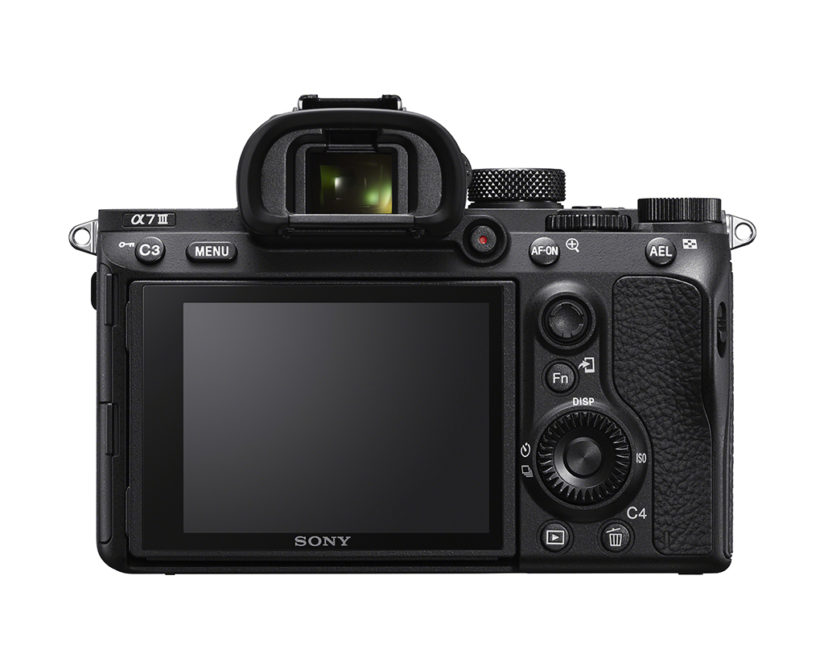
While Sony improved its oft-maligned menu system in the a9, it’s still overly complex and one of the stumbling blocks for potential new users. Sony’s engineers always seem to have taken an approach of adding in every possible setting without much thought to grouping them. Items are now arranged more logically, but there are still too many oddly named settings, and dialing in a camera is an exercise in digging through sub menus and making guesses.
I feel that a lot of shooters overlook the benefits of in-body stabilization in cameras like the Sony a7 III and other mirrorless systems. The ability to shoot without a tripod or monopod in even challenging conditions can be the difference between getting a fleeting shot and missing it. In an era where national parks are cracking down on tripod use, having in-body stabilization keeps open some of the doors the Park Service is looking to close. That’s not to say you’ll never need a tripod, but an additional five stops of image stabilization is a huge deal that’s often left out of the purchase decision.
Having extensively tested Sony cameras since their arrival, I find the Sony a7 III to be much more functional than even the previous a7 II. The AF, which I already ranked among the best on the market, is now more accurate. Once you get familiar with the menu system, the camera is extremely customizable. It takes me about 20 minutes to configure a new Sony for the way I shoot, filling the function menu with my preferred tools and assigning tasks to the custom buttons, and then I’m good to go.
For example, when shooting animals or sports, I often set the camera to wide area selection AF but set it to toggle to a predefined focus point when I press and hold one of the function buttons. I’ll often use this when I suspect a subject will come from a specific place, like a path or clearing, but I still want to be ready for anything unexpected. With the camera set to a wide focus area, I can instantly capture anything in my field of view and then toggle to the specific focus point to capture when my subject emerges. Without an intimate familiarity with the menu system, though, you wouldn’t even know this was possible. The settings to achieve this are spread out across several different menu options.
Image Quality & Purchase Decisions
The 24-megapixel sensor in the a7 III is a revamped version of that found in the a7 II, which means that Sony shooters will already be familiar with the excellent image quality in the a7 III. Shooters of other platforms will have no complaints about the image quality with this camera, or any cameras in Sony’s system. We’re fortunate to be in an era where just about all cameras create excellent images, and the a7 III is no exception.
With 14 stops of dynamic range and a sensor designed for improved low-light performance over its predecessor, the a7 III creates excellent images with great tonality in a variety of lighting conditions. That means that there is very little to say about the image quality aside from the fact that it is on par with or better than any comparable system in this price range.
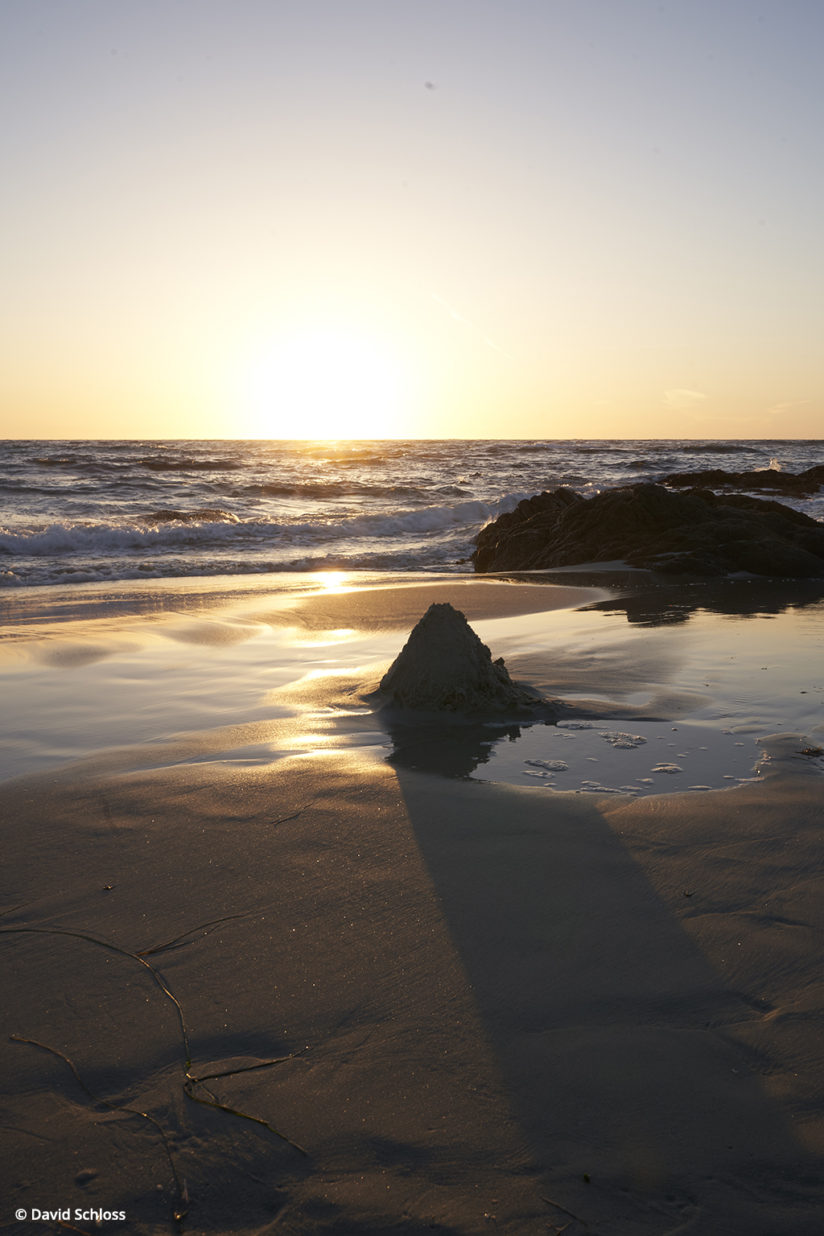
For landscape and wildlife photographers, the Sony a7 III is a particularly good option, especially for those who go off the beaten path to capture images. With a smaller form factor than comparable DSLRs and some of the best image quality, dynamic range and ISO sensitivity in the class, it’s a tremendous camera for the $2,000 price tag.
If you’re shooting with the Sony system, the upgrades over the a7 II are enough to make the purchase worthwhile for most photographers. If you’ve got an a7R III, the a7 III is a good backup body and a better choice for times when you need fast capture, but it can’t touch the a7R III in terms of resolution.
Clearly, though, Sony sees this as the model best priced to attract converts from the DSLR world, or from non-full-frame mirrorless cameras, and with these specs and this price, it’s made a compelling camera. There are many reasons that people pick a camera system, and Sony’s working hard to make the combination of price and performance a compelling reason for adoption of its cameras. At very least, the Sony a7 III helps redefine the performance expected at this price point, and that’s good for all photographers.
The post Sony a7 III Review: Redefining “Entry-Level” Full-Frame Mirrorless appeared first on Outdoor Photographer.

